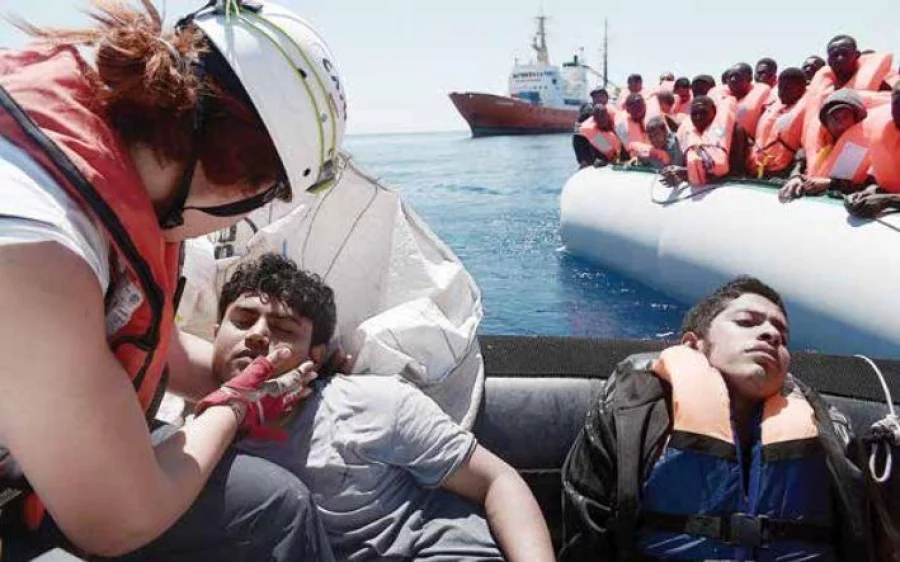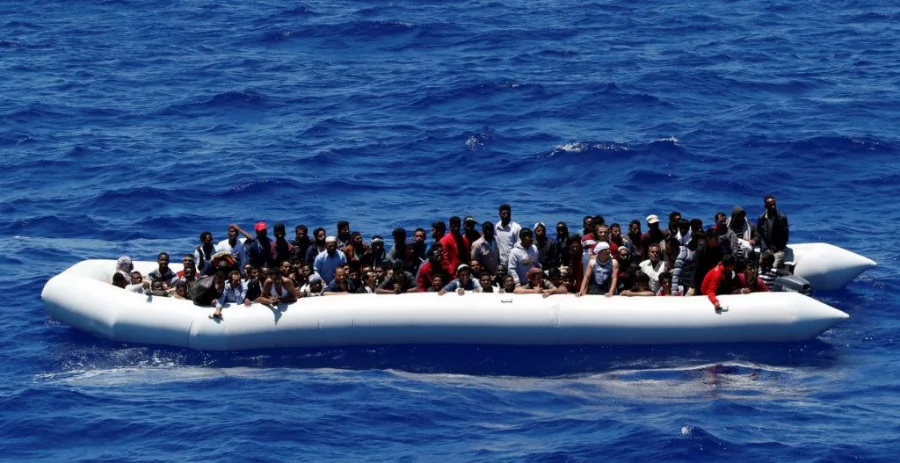
Bangladesh-Libya-Italy
Bangladeshi diplomats in Tripoli said that European countries have become very strict on refugees entering Europe. The only unregulated channel is the perilous voyage across the Mediterranean. Those who have made it to Italy say that they entered Libya via Istanbul on most occasions, and at times via Sudan and Egypt. Rishat (not his real name), an 18-year-old who passed his HSC exams was tempted by human traffickers. Instead of enrolling in universities in Bangladesh, he undertook the journey with dreams of studying at European universities and earning tonnes of money. The second among seven siblings of a Sylhet family, Rishat thought he could provide for his family while pursuing his education. The offer of paying only Tk4.2lakhs after successfully reaching Italy won him over. After all, it was less than half the legal cost of paying Tk10lakhs. Not only him, his family was also convinced of how “fantastic” the offer was. But the reality was different in Libya. Rishat reached Libya without facing any obstacles at the airport despite not having any legal documents to go to the war-torn country.Also Read- From the horse’s mouth: A trafficker tells how he smuggles people to Italy
Rishat was among 10 other Bangladeshis who boarded a late-night flight at Shahjalal Int’l Airport eight months ago. The group, herded by two traffickers, entered the airport early in the morning wearing identical caps. They lounged inside the airport for the entire day. Tired and weary, they were quickly shuffled across the terminal late at night when there were very few people. He said: “Not a single immigration official in Dhaka, Istanbul or Tripoli asked where we are from. But everyone else was asked. It was obvious they knew about our passage to Libya.” From Shahjalal in Dhaka to Ataturk in Istanbul to Mitiga in Tripoli, the group of 10 was chaperoned by the two traffickers who kept a stern watch on them at every airport. A Libya-based Bangladeshi diplomat, asking to remain unnamed, said that even he was questioned by immigration officials at Dhaka, Istanbul and Tripoli. But he was surprised to see that small groups of Bangladeshis were completely ignored by officials at the very same airports. He said: “The illegal Bangladeshis coming to Libya are treated better than VIPs!” According to him, the smuggled Bangladeshis can be easily identified by the Libyan traffickers wait with Bangladeshi traffickers at the airport to receive the new visitors. The new groups are identified by their caps, or at times their t-shirts. A Bangladeshi expatriate engineer living in Libya since his birth said: “In every step of the way to Libya from the village of Bangladesh, money talks.” Rishat reached Italy about three months ago. Bereft of any legal documents, he has found himself in a refugee camp – unable to work, study, or pursue his dreams.
 A rescuer helps migrants from an overcrowded plastic raft that was drifting during a search and rescue operation by rescue ship Aquarius, operated by SOS Mediterranean and Doctors without Borders, in central Mediterranean Sea May 18, 2017 REUTERS
A rescuer helps migrants from an overcrowded plastic raft that was drifting during a search and rescue operation by rescue ship Aquarius, operated by SOS Mediterranean and Doctors without Borders, in central Mediterranean Sea May 18, 2017 REUTERSBangladesh-Egypt/Sudan-Libya
Rana lives in the same camp as Rishat after crossing the Mediterranean. He spent eight years in Malaysia as an undocumented migrant who travelled to the South Asian country by boat He said to Dhaka Tribune: “I always dreamed of coming to a European country to settled. My journey started from Shariatpur. Now I am in Italy. It was certainly dangerous, but now, I am in heaven.” Rana spent Tk6.2lakh to reach Italy. He travelled to Libya first via UAE and Sudan. “First I was taken to Sharjah International Airport from Dhaka. From there I was taken to Khartoum International Airport in Sudan. And like Rishat, everything seemed to me very planned as in every station we landed there were Bangladeshis received us.” Rana said. From Sudan, Rana spent a week in a Bangladeshi trafficker’s house and paid Tk4lakhs. Then, he was sent to Libya across the Sahara Desert on an SUV. Rana says that middlemen from numerous countries bring the migrants to Libya and gather them in farmhouses in Al- Swani, Qaser Bin Ghashir, Alkremiya, Janzour, Az-Zawaiyah. After the Bangladeshis are gathered at the farmhouses, the Bangladeshi traffickers hand them over to their Libyan counterparts who will send the migrants to Italy by boat. There are two ways to pay the traffickers: one is before the migrants start their journey towards Libya by paying the full money after reaching Libya. Rana said that very few people pay in advance because the human traffickers offer the passage to Italy fully paid until the successful completion, which attracts more and more migrants from Bangladesh. When the boats are arranged by the Libyans, the Bangladeshi traffickers ask the migrants to tell their guarantors to pay the money in Bangladesh. The money is sometimes transferred to bank accounts or sent via Bkash. Then, it is time to board the boats. Migrants are seen before being rescued by "Save the Children" NGO crew from the ship Vos Hestia in the Mediterranean sea off Libya coast, June 15, 2017. REUTERS/Stefano Rellandini
Migrants are seen before being rescued by "Save the Children" NGO crew from the ship Vos Hestia in the Mediterranean sea off Libya coast, June 15, 2017. REUTERS/Stefano Rellandini
